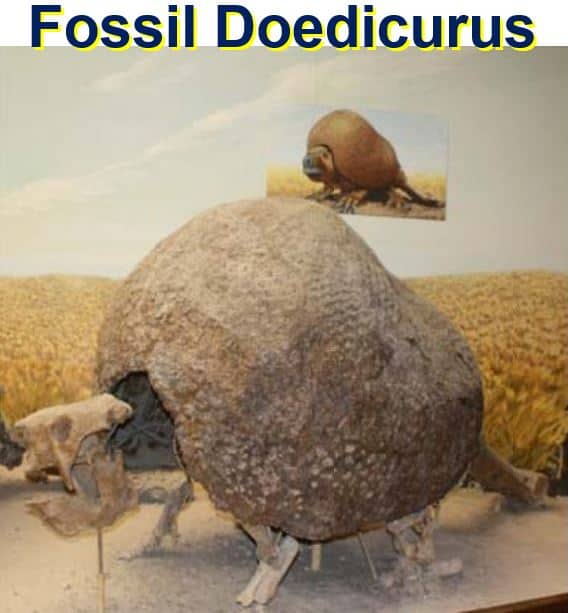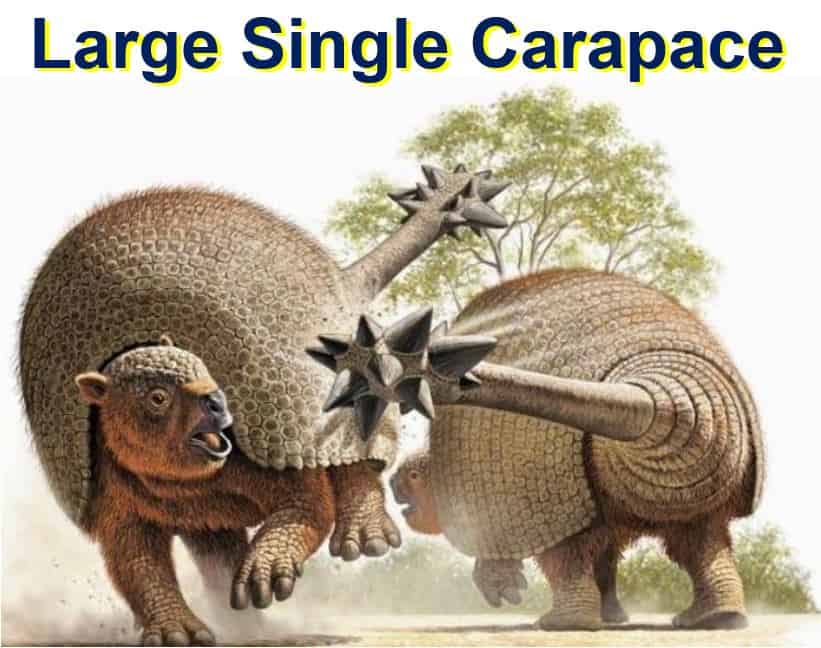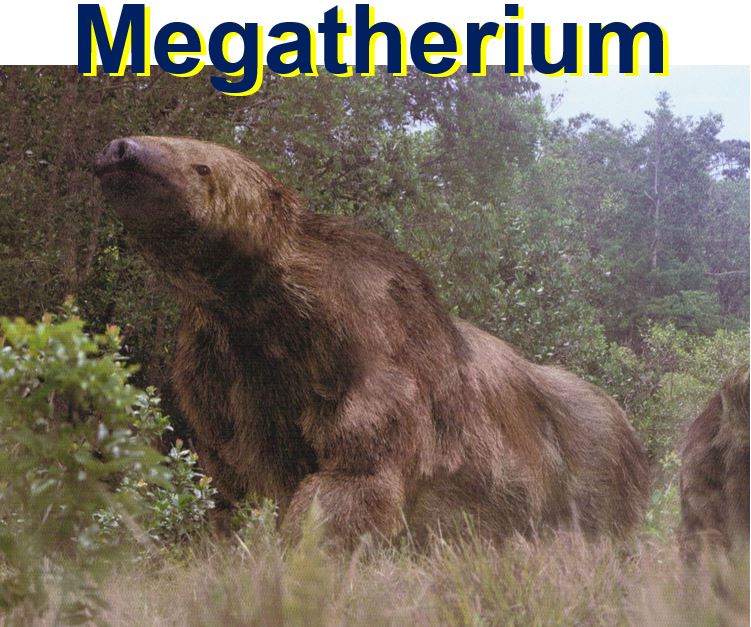Giant armadillos the size of cars roamed South America for millions of years until 12000 years ago, says a team of scientists, who say the continent used to have sloth-like animals the size of an elephant and other impressive megafauna.
In terrestrial zoology, megafauna refers to large or giant animals. Some organisations define megafauna as any animal weighing at least 45 kg (100 lb), while others place the minimum at 100 kg (220 lb).
A study of 12,000-year-old DNA carried out by an international team of scientists from France, Canada, the USA and Argentina, found that an extinct group of enormous, armoured creatures with spiky, club-shaped tails belongs within the family tree of modern armadillos.
 Fossil Doedicurus specimen from the La Plata museum in Argentina. These herbivorous animals were the size of cars. (Image: cnrs.fr. Credit: Sergio Vizcaino)
Fossil Doedicurus specimen from the La Plata museum in Argentina. These herbivorous animals were the size of cars. (Image: cnrs.fr. Credit: Sergio Vizcaino)
South America had some huge glyptodonts
Up to 12,000 years ago, South America had an impressive array of glyptodonts, a group of imposing armored mammals.
Until this study, glyptodonts were considered to represent a phylogenetically distinct group closely related to armadillos (cingulates), but their affinities had remained an enigma.
The scientists, who wrote about their latest study and findings in the academic journal Current Biology (citation below), say they have solved this enigma by sequencing the whole mitochondrial genome of a 12,000-year-old specimen.
Frederic Delsuc, from the National Centre of Scientific Research (CNRS) and Montpellier University in France, and colleagues managed to show that glyptodonts are the extinct ancient ancestors of armadillos.
After they emerged, about 35 years ago, glyptodonts underwent a spectacular growth spurt and became enormous creatures.
 Doedicurus’ firmly-anchored armour was large and sturdy, protecting almost 90% of the animal’s body. Its tail had long spikes at the end, perhaps just a feature of male individuals, researchers believe. (Image: opaleoblog.blogspot.co.uk)
Doedicurus’ firmly-anchored armour was large and sturdy, protecting almost 90% of the animal’s body. Its tail had long spikes at the end, perhaps just a feature of male individuals, researchers believe. (Image: opaleoblog.blogspot.co.uk)
Glyptodonts are classified in the Xenarthra superorder, together with anteaters, sloths and armadillos. Yet glyptodonts and armadillos differ from all other mammals by their carapace (hard outer shell), made up of mobile bands, while that of their ancient prehistoric ancestors or cousins was a single piece.
A recent study on dental and cranial features that classified glyptodonts with the armadillos called this traditional interpretation into question.
DNA from Doedicurus carapace studied
In this latest study, Delsuc and colleagues studied the DNA from a piece of carapace believed to be from a 12,000-year old Doedicurus.
Doedicurus clavicaudatus was the largest prehistoric glyptodontid – it was 1.5 metres (4.9 ft) tall, 4 metres (13.1 ft) long and weighed from 1,910 to 2,370 kg (4,210 to 5,224 lb). It had a characteristic spiny club-shaped tail.
Sequencing of ancient DNA is no easy task because it has been considerably fragmented by time and humid conditions. Scientists also need to separate endogenous (of the animal itself) DNA strands from any environmental contamination.
In order to do this, the scientists had to develop RNA probes which could recognize the genetic material of the target species, which is a difficult task when none of the genomes of closely related species are known.
To overcome this challenge, the researchers modelled plausible ancestral sequences using mitochondrial genomes from modern sloths, anteaters and armadillos (Xenarthra).
They used these bioinformatic sequences to synthesize suitable RNA probes, which then made it possible to reconstruct the mitochondrial genome of this prehistoric species almost completely.
 Some huge animals used to roam South America. The Megatherium, a member of the Xenarthran mammal family (along with Doedicurus), was 6 to 8 metres long from nose to tail and weighed more than an elephant. (Image: walkingwith.wikia.com)
Some huge animals used to roam South America. The Megatherium, a member of the Xenarthran mammal family (along with Doedicurus), was 6 to 8 metres long from nose to tail and weighed more than an elephant. (Image: walkingwith.wikia.com)
12,000-year old Doedicurus was a cingulate
After carefully analyzing the specimen’s genes, they found it was clearly placed within the cingulates, where they represent a distinct lineage.
The last members of this lineage of huge cingulates, which emerged about 35 million years ago, became extinct about 10,000 years ago, i.e. at the end of the last Ice Age.
In a Summary in the journal, the authors wrote:
” Molecular dating suggests that glyptodonts diverged no earlier than around 35 million years ago, in good agreement with their fossil record. Our results highlight the derived nature of the glyptodont morphotype, one aspect of which is a spectacular increase in body size until their extinction at the end of the last ice age.”
Citation: “The phylogenetic affinities of the extinct glyptodonts,” Frédéric Delsuc, Ross D.E. MacPhee, Hendrik N. Poinar, Gillian C. Gibb, Melanie Kuch, Juan Carlos Fernicola, Sergio F. Vizcaíno, Guillaume Billet, Lionel Hautier, Jean-Marie Rouillard & John Southon. Current Biology Volume 26, Issue 4, pR155–R156, 22 February 2016. DOI: org/10.1016/j.cub.2016.01.039.
Video – South America’s unique animal evolution
South America’s prehistoric animals were very different from the animals that exist in that continent today.

